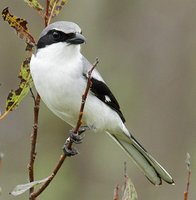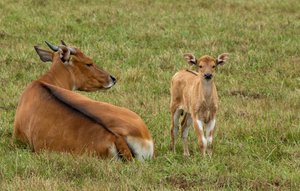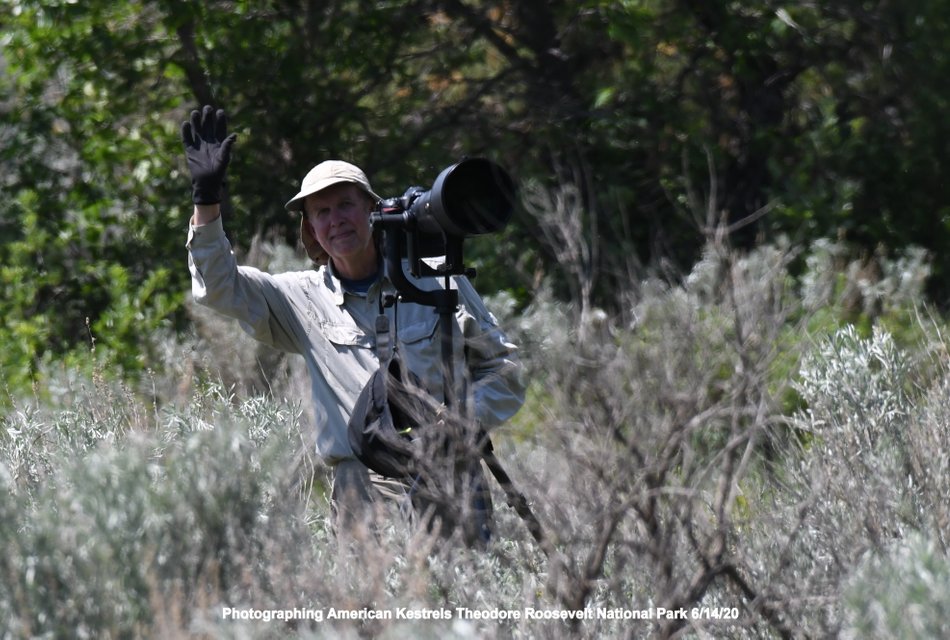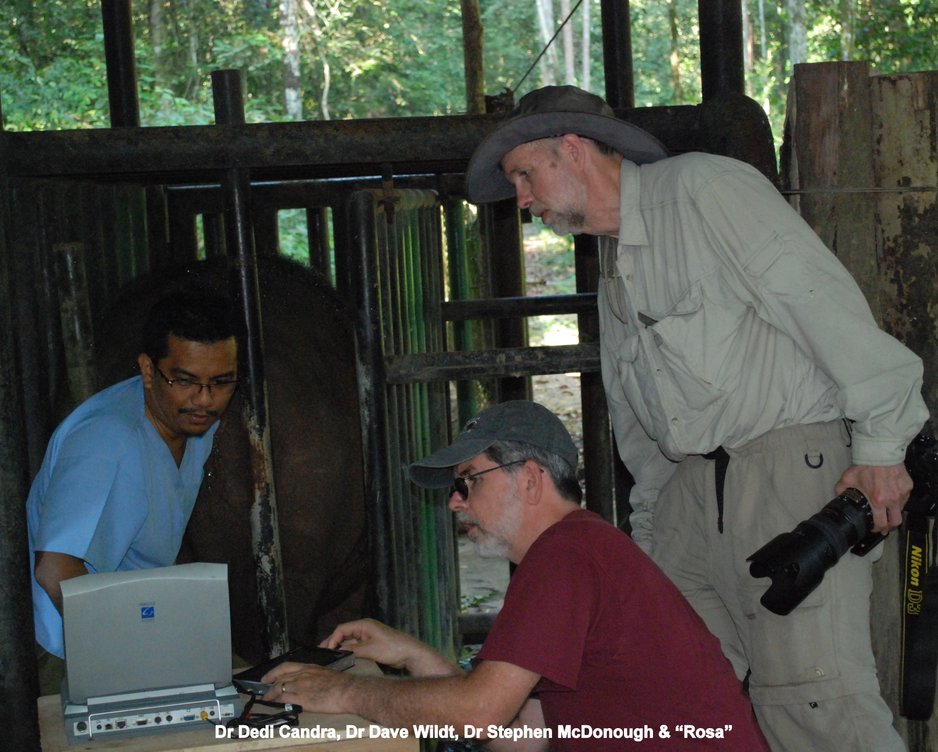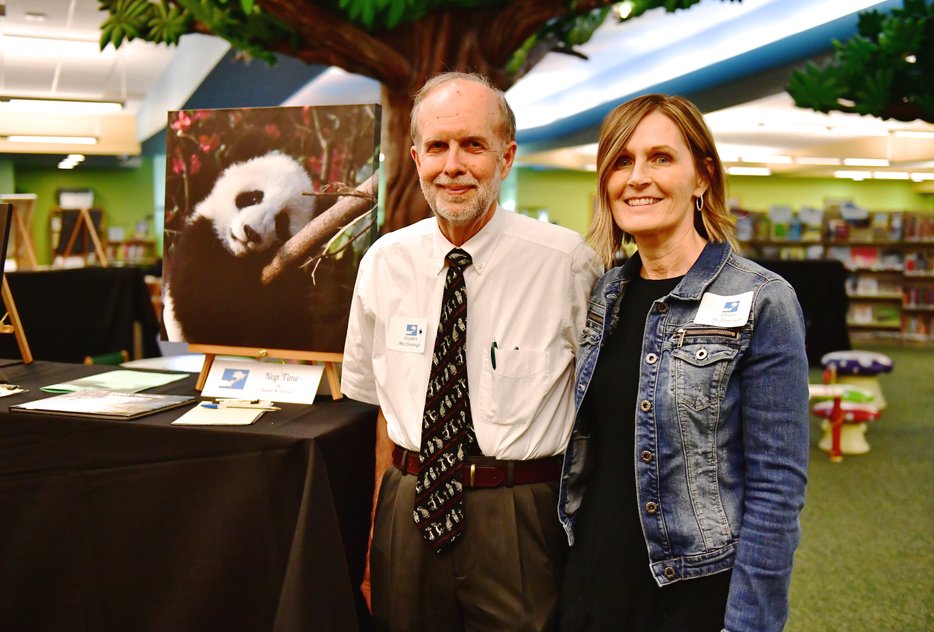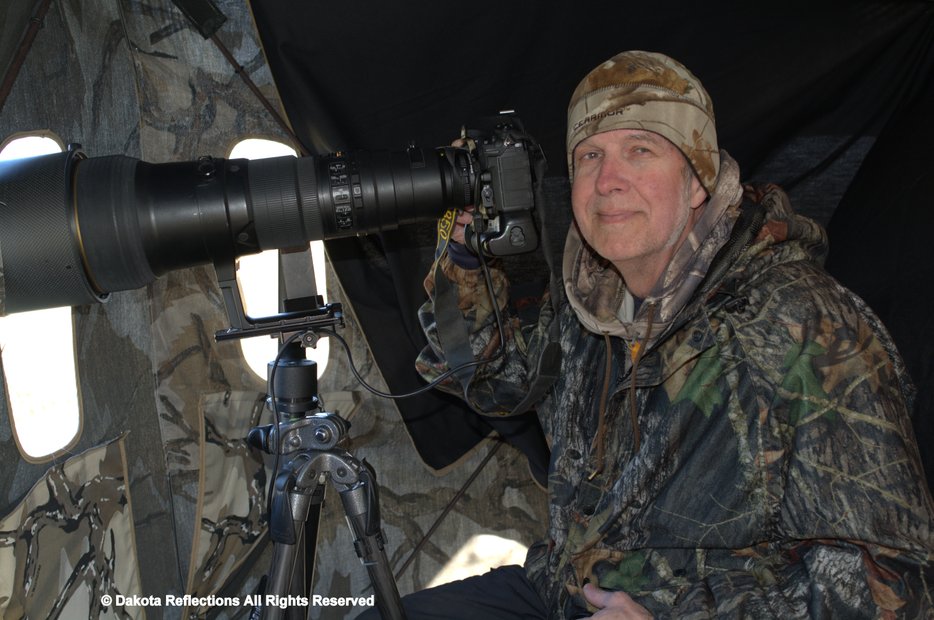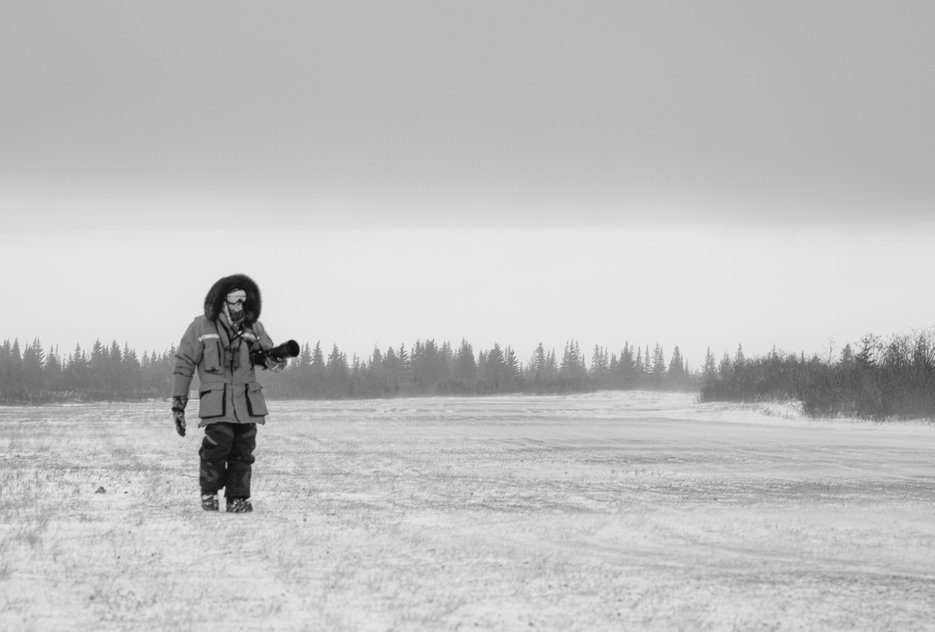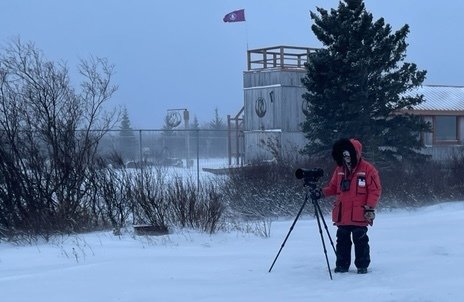Dakota Reflections
Stephen L McDonough
Family Wildlife
Conservation Fund
2020-2021
Cheetah Cub
White Oak Conservation Center
March 3, 2012
2020 C2S2 Conservation Center Awardees
African Lion Safari, C2S2 Conservation Center – $8,891 The award was granted to African Lion Safari to advance their groundbreaking work in Loggerhead Shrike conservation. As the only known conservation breeding program in North America for a migratory passerine, the African Lion Safari is seeking to double the release capacity of Loggerhead Shrike into the wild at the Napanee release site in Ontario. Additionally, they aim to provide professional development opportunities for animal care professionals to participate in releases.
2020 C2S2 International Conservation Partner Awardees
Friends of Wildlife, Global Partner of Smithsonian Conservation Biology Institute (SCBI) – $12,500 Friends of Wildlife has partnered with SCBI since 2008 and was awarded funds to raise awareness and policy support for banteng conservation in Myanmar. Friends of Wildlife will work with local communities and partners to promote grassroots conservation efforts and provide accurate, up-to-date information of a species that is decreasing at an alarming rate.
World Parrot Trust, Global Partner of African Lion Safari – $12,500 This award was granted to World Parrot Trust to support conservation efforts to release healthy populations of blue-throated macaws back into their natural habitat in Bolivia. Working with a local partner, the Foundation for the Conservation of Bolivian Parrots, the World Parrot Trust also aims to build aviaries and develop educational and outreach programs to engage the local community in this conservation effort.
Request for Proposals:
Stephen L McDonough Family Wildlife Conservation Fund
Introduction
The Stephen L McDonough Family Wildlife Conservation Fund (‘McDonough Fund’) is now seekingshort proposals for the first round of grant funding for the construction of new or expanded activities and infrastructure development. The purpose of the McDonough Fund is to enhance the wildlife conservation efforts of the Conservations Centers for Species Survival (‘C2S2’) full member institutions and their global partners.
Two grant opportunities are available annually through the McDonough Fund:
1. C2S2 Conservation Center Grants: $20,000 awarded annually to fund conservation program(s) at C2S2 full member Conservation Center(s), and
2. C2S2 Conservation Center International Partner Grants: $25,000 awarded annually to fund international wildlife conservation program(s) partnering with a C2S2 Conservation Center.
Grant requests are due to C2S2 on July 15, 2020, by 11:59 PM Pacific with decisions in mid-August. Please submit one document in pdf format to info@conservationcenters.org with the subject line ‘2020 McDonough Fund Application.’
Application Requirements Eligibility
C2S2 Conservation Center Grant - All C2S2 full member organizations are eligible for the annual $20,000 award. Collaborative projects focused on C2S2 priority species or programs are encouraged.
C2S2 Conservation Center International Partner Grant - All international wildlife conservation programs or institutions that have active collaborations, not just financial, with one or more C2S2
Conservation Centers are eligible for the annual $25,000 award. There will be no limit to how many applications can be submitted per institution.
Selection Process
The C2S2 Board of Directors will review and determine funding allocations. The number of grants supported and award amounts will depend on the scope of the projects and the number of proposals received. The board may also choose to roll over some or all funds to the following year. Priority will be given to C2S2 target species (see Appendix A and B), and to projects that enhance public information/education or access for the endangered species.
Reporting
Grantees will provide a 6-month and year-end progress report using an online reporting platform provided by C2S2. Reports also may include contractor documentation, videos, and photos as appropriate. C2S2 reserves the right to conduct site visits to monitor research progress.
Timeline
All funding requests from the McDonough Fund are limited to 12 months and all projects must be completed within 12 months of the receipt of funding. The McDonough Fund will consider a no-cost extension of a maximum of 6 months upon request. However, multi-year projects are encouraged to re-apply in subsequent years. McDonough Grant funds can only be used for proposal expenses incurred on or after the award date.
Funding Requirements
Matching funds are not required but are encouraged. Funds are to be used within 1 year from the start date. Any changes to funded projects must be pre-approved by C2S2. The McDonough Fund does not provide support for salaries, stipends, travel expenses, or research. Research may only receive funding if it is not the main component of the project, is needed to expand conservation infrastructure, and has
a public education and access component. These grants are intended for new or expanded activities and infrastructure only. All projects involving live animal research must provide an approved Institutional Animal Care and Use protocol before funding is released. Where biomaterials from endangered species are involved, documentation verifying legal import should be provided before
funding is released.
Acknowledgment
Grantees agree to provide appropriate standard forms of public recognition on grant and project-related materials and signage proportionate to the level of funds received. Such recognition may include but is not limited to a feature in the grantee’s newsletters, press releases, publications, media coverage, and on social media, and inclusion on the website’s and/or annual report donor list.
Please include C2S2’s logo and a link to C2S2’s website where applicable. Grantees agree C2S2 may include information regarding this grant, including the amount and purpose of the grant, any photographs or other material provided by you, your logo or trademark, or other information or materials about your organization and its activities in C2S2’s press releases, annual report, newsletters, on social media, etc.
Awardees may be asked to present at the C2S2 Annual Meeting.
Other Requirements
Stephen McDonough requests the opportunity to visit with organizations receiving funds
Conservation Centers for Species Survival (C2S2)
C2S2 was founded in 2005 when five endangered species breeding and management centers in the U.S. joined together to develop new, science-driven solutions to species survival. The collaboration represents decades of experience in wildlife management, recovery efforts, and reintroduction programs. In its first decade, C2S2 was based at Smithsonian Conservation Biology Institute (SCBI) in
Virginia. In 2015, C2S2 became an independent, 501(c)(3) organization and hired its first CEO to apply business strategies to advance its mission. C2S2 creates opportunities for conservation centers, zoos, and private landowners to apply collective resources and collaborate for the survival of threatened and endangered species at a larger scale.
Contact:
Angelina Casillas
C2S2 Programs Coordinator
701 Brazos St. 16th Floor
Austin, TX 78701
Phone 857.600.2810
acasillas@conservationcenters.org
Application Instructions
Please provide a cover letter with the following information:
Title of Project:
Name of Principal Investigator or Project Lead
Organization / Institution
Address
Phone
C2S2 Member International Partner Institution (if applicable)
Address
Phone
Collaborating Organizations
Total project budget
Request for Support in USD
Match % (if applicable)
Project Start Date:End Date:
For the following questions, please answer in under 250 words unless otherwise noted.
1. Project Summary. What is (are) the overarching objective(s) or focus of this project? Please provide a nontechnical summary that includes a summary of the goals and a description of the potential benefits of the project.
2. Conservation Impact. What are the proposed conservation methods and why are they sound? Describe the general approach of the proposed project. Include the context within which the project takes place, why the project is timely, and how it addresses a current critical need.
3. Project Methodology. Explain the design for this project, why it is appropriate, and how it will be evaluated. Clearly state the hypotheses to be tested, how data will be collected and analyzed, why the methods are appropriate, and how the project will be evaluated. (If this is a conservation education or professional training project, describe educational methods to be employed, the target audience, how many people will be reached, and why these methods are appropriate, etc.). Project objectives and specific goals related to achieving those objectives should also be stated. Both goals and objectives should be measurable, time-limited, and specific. (Limit 500 words)
4. Collaborating Institutions or Organizations: A collaborating institution is defined as an institution actively involved in the design or completion of the project. Funding institutions not actively involved in project design or completion should be listed in the “Grant/Matching Support” section of the Project Budget and need not be listed as collaborators. List all collaborating institutions, including the C2S2
Conservation Center, and attach one Statement of Institutional Support letter for each collaborating institution.
5. Timeline. Provide a timeline in which includes each component of the project that will be completed within the 1-year project duration. The use of bulleted/numbered lists is encouraged.
6. Information sharing. Explain and identify the means and timeline of how the key results and lessons of the project will be disseminated and shared. Key internal and external audiences should be identified and a communication strategy should be included.
7. Key personnel and collaborators. Describe the project team by identifying the personnel included for this project, their roles, qualifications, and the key skills they bring. Be sure to include each PI listed on the Cover Sheet and any collaborators (persons actively involved in the design or completion of the project). Each collaborator’s institution should be listed under Collaborating Institutions or
Organizations on the Application Cover Sheet.
8. Permits. Have all the necessary permits been obtained for the project? If yes, list the permits here and attach one electronic copy to your McDonough Fund application email. If the necessary permits have not yet been obtained, please explain why and when those permits are anticipated.
9. Animal Care and Use Approval. Does this project involve research on live animals? Yes/No. Has this project been approved by your institutional animal care and use committee? If yes, include a copy of the approval. If no, list as pending. Note: No funds will be released unless documentation of approval is provided to C2S2.
10. Project Budget. A budget sheet template is provided below. Information should be separated into expenses being requested of the McDonough Fund versus costs that will be incurred by other (non-McDonough Fund) resources. List under each category the budget items and method of calculation for each (e.g., 2 persons x 10 days x $25/day) as well as probable sources of other support.
11. Budget justification. Please explain why the budget is reasonable and necessary and how the budget supports the project goals and objectives. If this is a multi-year project, identify the funding strategy for
subsequent years.
12. Curriculum Vitae (CV). Please include a CV(limit 2 pages) for each PI.
Photographing American Kestrels
Theodore Roosevelt National Park, North Dakota
June 14, 2020
Journey towards Conservation
Denise and I came to conservation relatively late in our lives but we have long been animal lovers. Denise grew up in North Dakota and had cats in her family. I grew up in Minnesota and had dogs in my family. Fortunately for me, Denise is allergic to cats so we had dogs in our family together and currently live with our 3rd, 4th and 5th golden retrievers; Nala, Kiara and Indy with Lacy and Belle preceding them. Denise also has had a couple of small dogs, Fluffy and Chloe.
In 2007, Denise and I traveled to Tanzania to climb Kilimanjaro and go on a safari of 4 national parks. The focus was mountain climbing and eco-tourism with photography as a secondary activity. Photographs were desired of the “Big Five” the lion, leopard, rhinoceros, elephant, and Cape buffalo, originally described by big game hunters as the most difficult animals to hunt on foot but now among the most desirable animals to photograph in Africa. We were able to get decent photographs (by my 2007 standards) of all but a rhinoceros. The only rhino we saw in the 1 ½ week long safari was a speck in the vast Ngorongoro National Park.
Upon returning to North Dakota, I resolved in my obsessive-compulsive manner to return to Africa to get photographs of a rhinoceros (which I have not done as of 2020). Through a search of internet, I became acquainted with the International Rhino Foundation and I called Dr. Susie Ellis. The International Rhino Foundation had a donor level which allowed a conservation trip and I thought what a good idea, make a donation for an endangered species and then go see the endangered species. So the trip to Tanzania, which had nothing to do with conservation, started a journey towards conservation.
One of the International Rhino Foundation fundraising activities was bidding on a weekend trip to White Oak Conservation Center in Yulee, Florida. The IRF did this for two years and I won the bids on both occasions and was able to take our family to White Oak. While at White Oak, Denise and I were able to meet John Lukas, Steve Shurter, Dr. Susie Ellis and Dr. David Wildt, learn about the Conservation Centers for Species Survival, see and feed four species of rhinoceros (Sumatran, Greater One-horned, Black and White) and giraffes. Denise and I bottle fed George, a very young white rhinoceros, and an Okapi. Later, in 2012, Denise and I accompanied Dr. Susie Ellis and Dr. David Wildt on a donor tour of Indonesia and we saw Andatu as a 3 week old infant Sumatran rhinoceros and took a sailboat trip to Anak Krakatau.
Our interest in supporting endangered species conservation was increasing and I approached the Conservation Centers for Species Survival about becoming the first non-organizational donor to C2S2 and they agreed. In June 2012, Denise and I became the first Sponsor Members of C2S2. I have attended each C2S2 meetings from 2013 to 2019 with the 2020 meeting being cancelled due to COVID-19 (2013 May 14-16 Smithsonian Conservation Biology Institute- Front Royal, Virginia; 2014 May 13-15 White Oak Conservation- Yulee, Florida; 2015 May 19-21 Omaha's Henry Doorly Zoo & Aquarium- Omaha, Nebraska; 2016 May 3-6- San Diego Zoo Global- Safari Park- San Diego, California; 2017 April 11-14- Fossil Rim Wildlife Center at Somervell County Expo Center- Glen Rose, Texas; 2018 April 17-19 Austin Savanna- Austin, Texas and 2019 April 9-11- African Lion Safari- Hamilton, Ontario). In addition, I visited each of the founding C2S2 organizations: Smithsonian Conservation Biology Institute/National Zoological Park, Fossil Rim Wildlife Center, White Oak Conservation Center, The Wilds and San Diego Zoo Global.
In 2013, I was invited by the International Rhino Foundation to attend the Sumatran Rhino Crisis Summit in Singapore and in 2017, I was invited by Dr. David Wildt to accompany veterinarians from the National Zoo and San Diego Zoo Global to China on a Giant Panda Conservation tour.
In April 2015, I retired from 35 years as working as a pediatrician in North Dakota to a life of walking dogs and starting a nature photography business designed to connect children with nature. I established a website, dakotareflections.com, which in 2020 averages 100 visits a day from people all over the world. I have been able to write 6 children’s books; Foxy Babies, Baby Panda Adventure, Foxy Town USA, Seven Reasons to Love Mountain Bluebirds, Time to Go Potty, There are More than Tigers in India in addition to 2 books on Nature photography. For the past 4 years, I have given presentations to elementary students on animals, habitat and conservation.
In January 2017, I returned to the practice of pediatrics to help Dr. Denise McDonough in her new primary care clinic, Independent Doctors, and have resumed caring for children with complex health issues. In 2019, I approached the Conservation Centers for Species Survival about establishing a donor directed fund, the Stephen L McDonough Family Conservation Fund with a commitment of $250,000 to be donated over 5 years, with $25,000 for administration, $100,000 for C2S2 organizations to enhance their conservation efforts and $125,000 for international conservations organizations with a relationship to a C2S2 organization to enhance their efforts. In December 2019, $50,000 was donated to be available beginning in 2020.
So, what began in 2007 as a trip to Tanzania became a journey towards conservation and along the way Denise and I have met many wonderful conservationists from all over the world. We deeply appreciate the dedication of the C2S2 member and affiliated organizations and look forward to advising C2S2 on how their wonderful conservation efforts can be enhanced.
Denise McDonough, Dr. Pat Condy, Stephen McDonough
Baby White Rhino
Fossil Rim, Texas
February 4, 2012
Stephen McDonough and Baby Kiwi
Smithsonian Conservation Biology Institute
April 26, 2012
Bottle Feeding Okapi Calf
White Oak Conservation Center
April 9, 2011
Bottle Feeding White Rhinoceros Calf
White Oak Conservation Center
February 5, 2011
Ultrasound Sumatran Rhino "Rosa"
Dr. Dedi Candra, Dr. David Wildt, Stephen McDonough MD
Sumatran Rhino Sanctuary
Way Kambas National Park, Sumatra, Indonesia
July 27, 2012
Presentation of Certificate of Appreciation by Widodo Ramono
Ujung Kulon National Park
Java, Indonesia
July 31, 2012
Rhino Protection Unit
Way Kambas National Park, Sumatra, Indonesia
April 6, 2013
Baby Southern Elephant Seal
Gold Harbor, South Georgia
November 23, 2014
Photographing Brown Bears in the Rain
Stephen McDonough MD and Denise McDonough MD
Katmai National Park, Alaska
July 26, 2015
Northern Saw-wet Owl
Theodore Roosevelt National Park
October 20, 2017
Art of Books
Bismarck Veterans Memorial Library
April 27, 2018
Great Horned Owl Blind
Oliver County, North Dakota
May 10, 2020
Great Horned Owl Blind
Oliver County, North Dakota
May 10, 2020
McD
Kaska Coast, Hudson Bay, Manitoba, Canada
November 21, 2021
McD
Kaska Coast, Hudson Bay, Manitoba, Canada
November 20, 2021
REQUEST FOR PROPOSALS: STEPHEN L MCDONOUGH FAMILY WILDLIFE CONSERVATION FUND 2021
Introduction
The Stephen L McDonough Family Wildlife Conservation Fund (‘McDonough Fund’) is now seeking short proposals for the construction of new or expanded activities and infrastructure development. The purpose of the McDonough Fund is to enhance wildlife conservation efforts of the Conservation Centers for Species Survival (C2S2) Member institutions and their global partners.
There are two annual grant opportunities through the McDonough Fund:
C2S2 Conservation Center Grants - $20,000 awarded annually to one or more conservation projects at C2S2 Conservation Center(s). C2S2 Full Member Conservation Centers are eligible.
C2S2 Member International Partner Grants - $25,000 awarded annually for projects by international wildlife conservation organizations actively partnering with a C2S2 Member (both Full and Affiliate Members eligible) organization. Applications should be submitted by the C2S2 member organization on behalf of the International Partner.
Collaborative projects focused on C2S2 priority species or programs are encouraged (see C2S2 website). There will be no limit to how many applications can be submitted per institution.
Grant requests are due to C2S2 on November 2, 2021, by 11:59 PM Pacific with decisions in December. Please submit one document in pdf format to info@conservationcenters.org with the subject line ‘2021 McDonough Fund Proposal.’
Application Instructions
Please provide a title page containing:
Title of Project
Name of Principal Investigator or Project Lead
Organization Name, Address, Phone
C2S2 Member International Partner Institution Name, Address, Phone (if applicable)
All Collaborating Organizations actively involved in the design or completion of the project
Total Project Budget
Request for Support in USD
Match % (if applicable)
Project Start Date and End Date
Please answer the following questions in two pages or less, either individually or as a summary:
- Project Summary. What is (are) the overarching objective(s) or focus of this project? Please provide a non-technical summary that includes a summary of the goals and a description of the potential benefits of the project. For International Partner grants, please describe the nature of ongoing collaboration between the C2S2 member and the partner organization.
- Conservation Impact. Briefly describe the general approach of the proposed project. Why is the project timely, and how does it address a current critical need?
- Project Methodology. Briefly explain the design for this project, how data will be collected and analyzed, and how the project will be evaluated. (If this is a conservation education or professional training project, describe educational methods to be employed, the target audience, how many people will be reached, and why these methods are appropriate, etc.). Project objectives and specific goals related to achieving those objectives should also be stated.
- Timeline. Provide a high-level timeline which includes each component of the project to be completed within the 1-year project duration. The use of bulleted/numbered lists is encouraged.
- Budget justification. Please explain why the budget is reasonable and necessary and how the budget supports the project goals and objectives. If this is a multi-year project, identify the funding strategy for subsequent years.
Please attach the following to your application:
- Project Budget. A budget form template is provided below. Information should be separated into expenses being requested of the McDonough Fund versus costs that will be incurred by other (non-McDonough Fund) resources. List under each category the budget items and method of calculation for each (e.g., 2 persons x 10 days x $25/day) as well as probable sources of other support.
- Permits. If the necessary permits have not yet been obtained, please explain why and when those permits are anticipated.
- Curriculum Vitae (CV). Please include a CV (limit 2 pages) for each PI.
BUDGET ITEM
Method of Calculation (e.g., 2 people x 10 days @ $25/day)
Amount requested from McDonough Fund
Funding also requested from Other Sources?
Amount requested from Other Source
Name of Other Source
REQUESTED FROM MCDONOUGH FUND
Selection Process
A grant review committee will make funding allocation recommendations to the Board of Directors. The number of grants supported and award amounts will depend on the scope of the projects and the number of proposals received. The committee or board may also choose to carry over some or all funds to the following year. Priority will be given to C2S2 target species (see Appendix A and B), and to projects that enhance public information/education or access for the endangered species.
Reporting
Grantees will at a minimum submit a final project and financial report using an online reporting platform provided by C2S2. Reports also may include contractor documentation, videos, and photos as appropriate. C2S2 reserves the right to conduct site visits to monitor progress.
Timeline
All funding requests from the McDonough Fund are limited to 12 months and all projects must be completed within 12 months of the receipt of funding. The McDonough Fund will consider a no-cost extension of a maximum of 1 year upon request. However, multi-year projects are encouraged to re-apply in subsequent years. McDonough Grant funds can only be used for proposal expenses incurred on or after the award date.
Funding Requirements
Matching funds are not required but are encouraged. Funds are to be used within 1 year from the start date. Any changes to funded projects must be pre-approved by C2S2. The McDonough Fund does not provide support for salaries, stipends, travel expenses, or research. Research may only receive funding if it is not the main component of the project, and is needed to expand conservation infrastructure, and has a public education and access component. These grants are intended for new or expanded activities and infrastructure only. All projects involving live animal research must provide an approved Institutional Animal Care and Use protocol before funding is released. Where biomaterials from endangered species are involved, documentation verifying legal import should be provided before funding is released.
Acknowledgment
Grantees agree to provide appropriate standard forms of public recognition on grant and project-related materials and signage proportionate to the level of funds received. Such recognition may include but is not limited to a feature in the grantee’s newsletters, press releases, publications, media coverage, and on social media, and inclusion on the website’s and/or annual report donor list. Please include C2S2’s logo and a link to C2S2’s website where applicable.
Grantees agree C2S2 may include information regarding this grant, including the amount and purpose of the grant, any photographs or other material provided by you, your logo or trademark, or other information or materials about your organization and its activities in press releases, annual report, newsletters, on social media, etc. Awardees may be asked to present at the C2S2 Annual Meeting.
Other Requirements
Stephen McDonough requests the opportunity to visit with organizations receiving funds.
Conservation Centers for Species Survival (C2S2)
C2S2 was founded in 2005 when five endangered species breeding and management centers in the U.S. joined together to develop new, science-driven solutions to species survival. The collaboration represents decades of experience in wildlife management, recovery efforts, and reintroduction programs. In its first decade, C2S2 was based at Smithsonian Conservation Biology Institute (SCBI) in Virginia. In 2015, C2S2 became an independent, 501(c)(3) organization and hired its first CEO to apply business strategies to advance its mission. C2S2 creates opportunities for conservation centers, zoos, and private landowners to apply collective resources and collaborate for the survival of threatened and endangered species at a larger scale.
Contact:
Angelina Casillas
C2S2 Programs Coordinator
701 Brazos St. #523
Austin, TX 78701
Phone 857.600.2810


